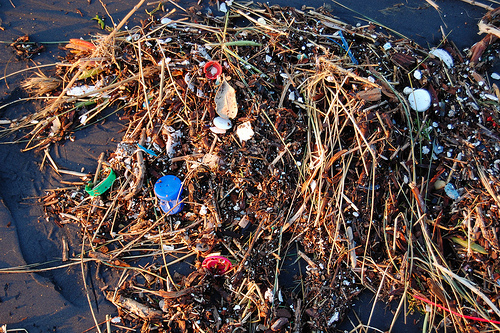 Should we allow our vast blue seas to be “The Ultimate Garbage Disposal?”Photo: Kevin KrejciDearest readers,
Should we allow our vast blue seas to be “The Ultimate Garbage Disposal?”Photo: Kevin KrejciDearest readers,
Back to our conversation about Sylvia Earle’s The World Is Blue: How Our Fate and the Ocean’s Are One. Apologies for the lag time since beginning the discussion last week. I was taking an unplanned break from technology, as my computer decided it wanted to take a summer break. Thankfully, I’m up and at ’em again. I hope the summer has been treating you well and you are enjoying this great blue book.
For today’s discussion, I have one word: garbage. Earle marvels at how much trash has wound up in the oceans in the chapter titled “The Ultimate Garbage Disposal.” She notes that the so-called Great Pacific Garbage Patch “is as big, as wide, as deep as the ocean itself.” Earle has seen trash on every ocean dive she has made in the past 30 years — from hermit crabs making their shells out of Bayer aspirin bottles to fish hiding in discarded tires on the ocean floor.
Tallying the trash from beach clean up efforts, Earle lists the top 10 items, in their order of abundance:
- Cigarette butts
- Plastic bags
- Food containers
- Caps and lids
- Plastic bottles
- Paper bags
- Straws and stirrers
- Cups, plates, eating utensils
- Glass bottles
- Beverage cans
The list makes a non-smoking world seem all the more desirable. Are you surprised by any items on this list, or the order in which they fall?
Earle goes on to discuss the smallest garbage evil of all — the nurdle:
Less obvious, much harder to retrieve and more insidious are small bits of plastic, fragments of larger objects, as well as countless tiny pale pebbles dubbed nurdles, the pre-production plastic spheres that are later melted and molded to produce thousands of products, from juice jugs and action figures to lamp shade and chairs. Over 113 billion kilograms (250 billion pounds) of nurdles are created from petrochemicals every year and transported by trucks and tankers.
Nurdles have a way of getting loose and blowing into things like storm drains and eventually flowing into larger waterways. Many face scrubs are filled with nurdles that go down your drain, and wind up in lakes and rivers and oceans where they get consumed by fish and other wildlife, which we eventually eat. No nurdles for me, thanks!
So, I ask you, dear readers, how much garbage do you generate? How many plastic items do you use every day? Which ones can you imagine giving up?
Trashily,
Umbra



